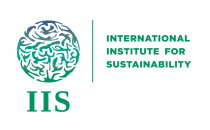Publications > Article
Reconciling rural development and ecological restoration: Strategies and policy recommendations for the Brazilian Atlantic Forest
Increased demand for both agricultural production and forest restoration may lead to increased competition for land in the next decades. Sustainably increasing cattle ranching productivity is a potential solution to reconcile different land uses, while also improving biodiversity conservation and the provision of ecosystem services. If not strategically implemented in integration with complementary policies, sustainable intensification can however result in negative environmental, economic and social effects. We analyzed the potential for sustainable intensification as a solution for a conflict between agricultural expansion and forest restoration in the Paraitinga Watershed at the Brazilian Atlantic Forest, a global biodiversity hotspot. In addition, we provide policy recommendations for sustainable development in the region, based on interviews with producers and local actors. We found that the Paraitinga Watershed has the potential to increase its cattle-ranching productivity and, as a result, relinquish spared land for other uses. This was true even in the most conservative intensification scenario considered (50% of the maximum potential productivity reached), in which 76,702 ha of pastures can be spared for other uses (46% of total pasture area). We found that restoration, apiculture and rural tourism are promising activities to promote sustainable development in the region, thus potentially increasing food production and mitigating competition for land. Our study shows that results from socioeconomic interviews and biophysical modelling of potential productivity increases offer robust insights into practical solutions on how to pursue sustainable development in one of the world’s most threatened biodiversity hotspots.

